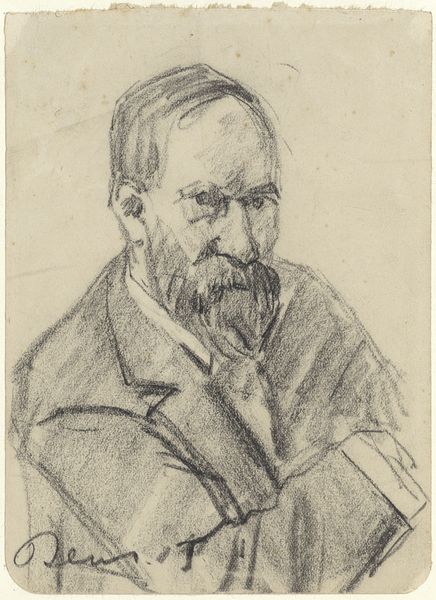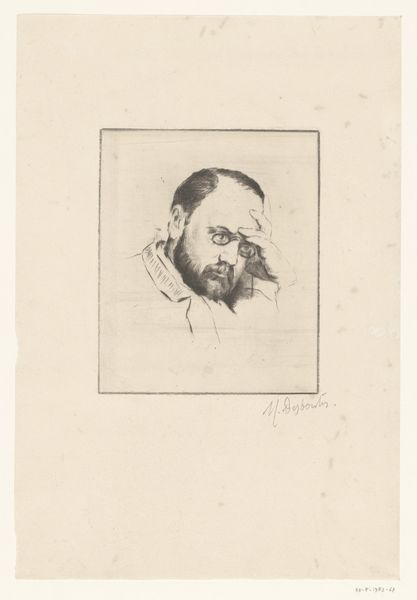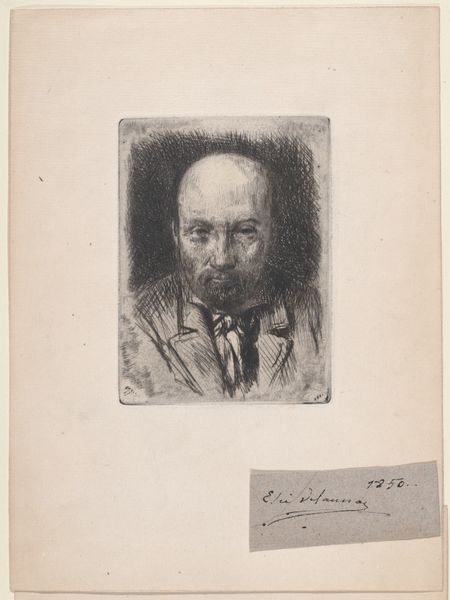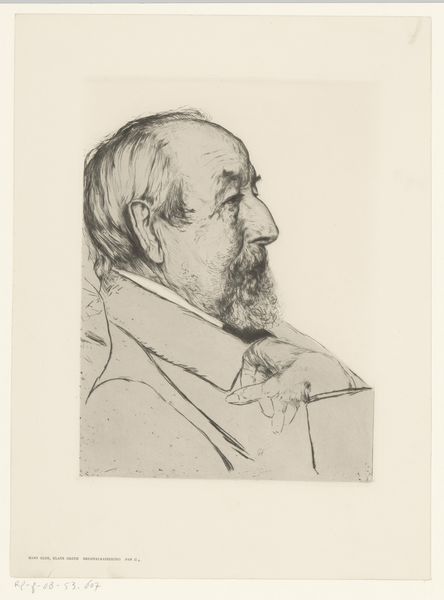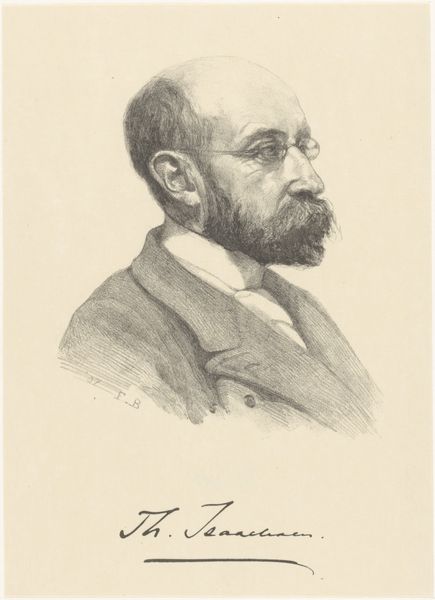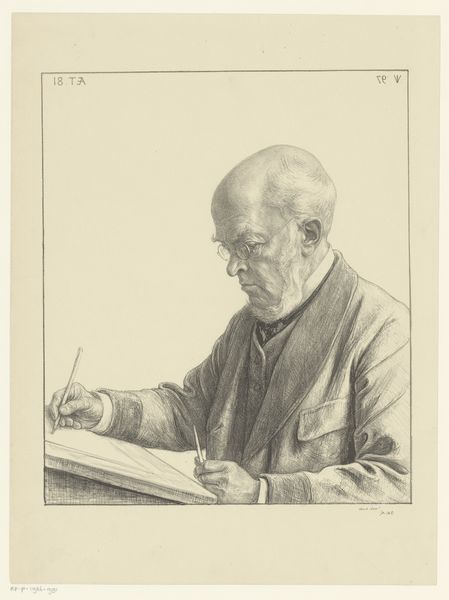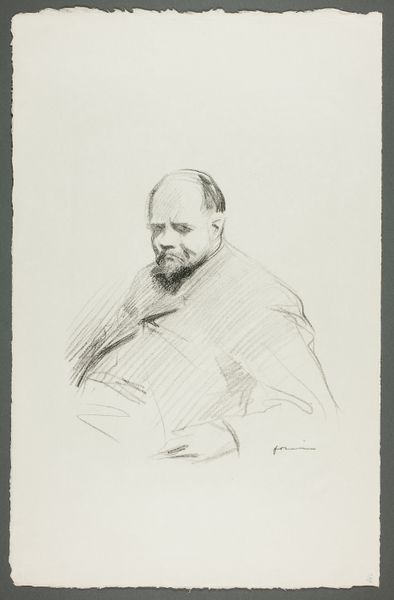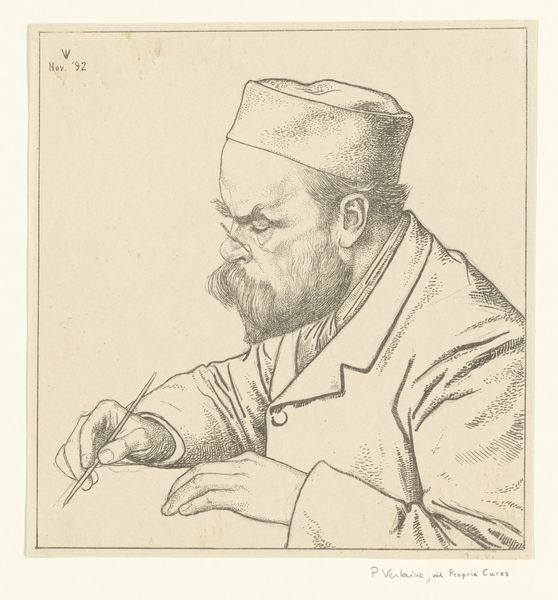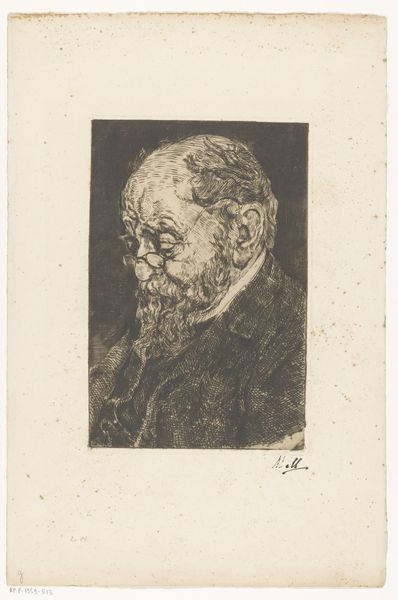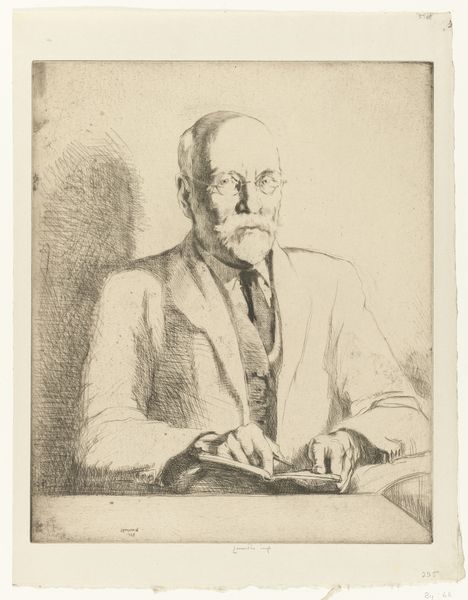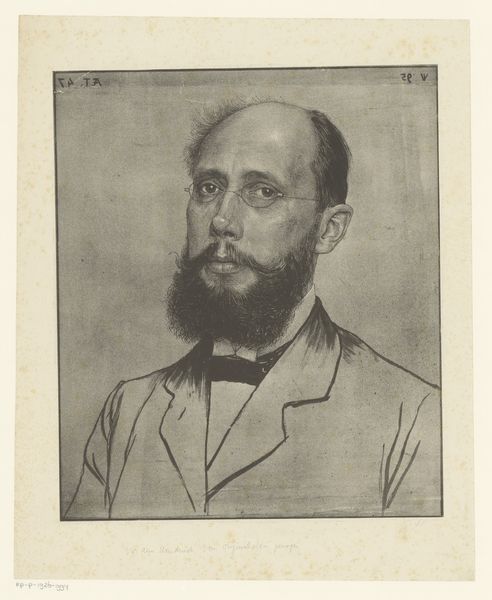
drawing, pencil
#
portrait
#
pencil drawn
#
drawing
#
pencil sketch
#
caricature
#
pencil drawing
#
pencil
#
portrait drawing
#
history-painting
#
realism
Dimensions: height 430 mm, width 288 mm
Copyright: Rijks Museum: Open Domain
Curator: This is Jan Veth's 1894 portrait of Nicolaas Gerard Pierson, currently held in the Rijksmuseum collection. The medium used is pencil. Editor: It’s a strikingly pensive portrait. The subject seems completely absorbed, brow furrowed, intensely focused on whatever he’s writing. The restricted palette accentuates the gravity of the moment. Curator: Veth’s masterful use of pencil elevates what could be a simple portrait to a nuanced study in character. Notice the precise hatching, building form and shadow. It really emphasizes the laborious process of creating an image with such detail, piece by piece. The very visible work of the artist. Editor: Yes, but there's more here than just artistic process. Consider Pierson's role: he was a pivotal figure, a former Prime Minister grappling with weighty matters of state during a time of significant social change. The intense concentration we see visualized must relate to broader discussions of societal direction at the time. How might his thoughts manifest socio-politically, one wonders. Curator: An interesting thought. I'm equally captivated by the physical materiality of the work, particularly given the scale. Veth pushes the humble pencil, challenging the high-art/low-craft divide. He draws our attention to the act of making and his visible mark. Editor: Absolutely. And the constraints of that medium, in a time of rising photographic technology, speak volumes. The deliberate choice of pencil in 1894 reflects not just Veth’s skill, but his artistic intention to show a crafted and labored object when photographs provided supposedly “easier” portraits. The drawing feels deliberately historical, too. Curator: Indeed, and let’s not forget, the final print itself would’ve required further labour and skill. From the paper source to the graphite mining, it reminds us that everything we see has undergone labour in different fields. Editor: Thinking about it, this piece acts as an intriguing visual testament to labor—the artist's labor in creation, the subject’s labor in thought, and society’s labour towards direction, change and progress at the end of the 19th Century. Curator: I concur! Considering Veth's meticulous process and the socio-political implications really allows for an incredibly insightful perspective here. Editor: A beautiful combination of technique and meaning creates such a vivid portrayal.
Comments
No comments
Be the first to comment and join the conversation on the ultimate creative platform.
